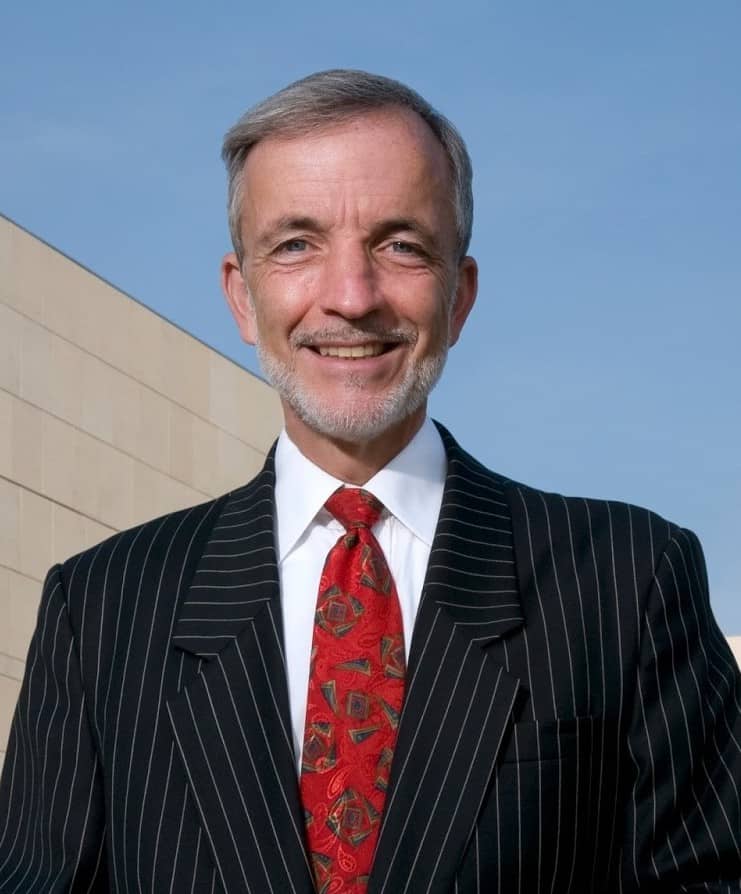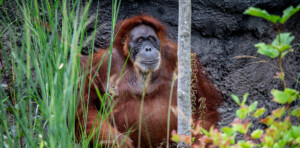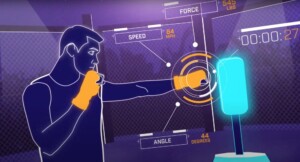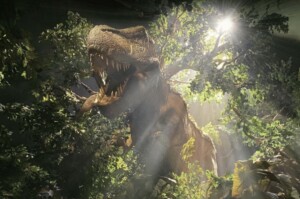Alex Nyerges, Director and CEO of Virginia Museum of Fine Arts since 2006, has more than 36 years of experience as an art museum director. He came to the VMFA from the Dayton Art Institute, where he was director and CEO from 1992 to 2006. Before his tenure in Ohio, Nyerges was the executive director of the Mississippi Museum of Art in Jackson, a position he also held at the DeLand Museum of Art in Florida.
Since 2006, the VMFA has completed the new McGlothlin Wing with collection galleries for American Art, Indian art, Native American and pre-Columbian art, a 10,000 square foot state-of-the-art conservation lab, a cafe, restaurant and gift shop. The collection has grown by more than 13,000 objects to 35,000 works of art including important collections of Native American, American, and works on paper.
In addition, the museum’s membership has increased five-fold to more than 35,000 households; the operating budget has increased more than 60% to more than $40 million, and attendance has increased dramatically in both size and diversity and now averages more than 500,000 visitors in Richmond.
Since reopening in 2010, the museum has organized exhibitions and published catalogues on Sally Mann, 19th century French still life painting, Jasper Johns and Edvard Munch, Faberge, Kawasi Hasui, and treasures from the Palace Museum, Beijing.
Alex Nyerges and the Virginia Museum of Fine Arts
Nyerges is now in his 16th year as Director of the Virginia Museum of Fine Arts. He is responsible for leading one of the nation’s top 10 comprehensive art museums with exciting and far-reaching strategic initiatives that have transformed the institution, making it more accessible, diverse, and inclusive. However, he initially started out as an archaeologist.

“I was taking field school in the summers at the Rochester Museum of Arts and Sciences, which is in Rochester, New York, in the Western part of the state,” he tells blooloop:
“I can remember very clearly the day when I was about 14 or 15 years old, and I was in the basement of the museum where the laboratories are. There was the assistant chief archaeologist, George Smith and the chief archaeologist Bob Sullivan. It was a rainy day, so we weren’t going out in the field.
“They were working in the lab, and I had this epiphany. I thought, oh my goodness – for these guys, this is their job. This is a world that I’m absolutely unfamiliar with.
“My father got up early in the morning, in the dark and came home late six days a week. He worked in a factory for 33 years that had no air conditioning in the summer and no heat in the winter. My father hated his job and retired at 62. So here I am, a young teenager, suddenly realising that there is this whole world around museums that would be possible.”
A career change
Accordingly, Nyerges set out on a course to become an archaeologist. His 1979 undergraduate degree was from George Washington University in Washington, DC with a double major in American Studies and in anthropology/archaeology.
“My first paying job was for the Smithsonian Institution, digging out in Eastern Colorado,” he says. “Yet, despite having spent 6 to 7 years in the field, I realised at this point that I hated archaeology. I hated dirt. What I really liked was the objects. I was interested in beauty and the history around objects and material culture.”
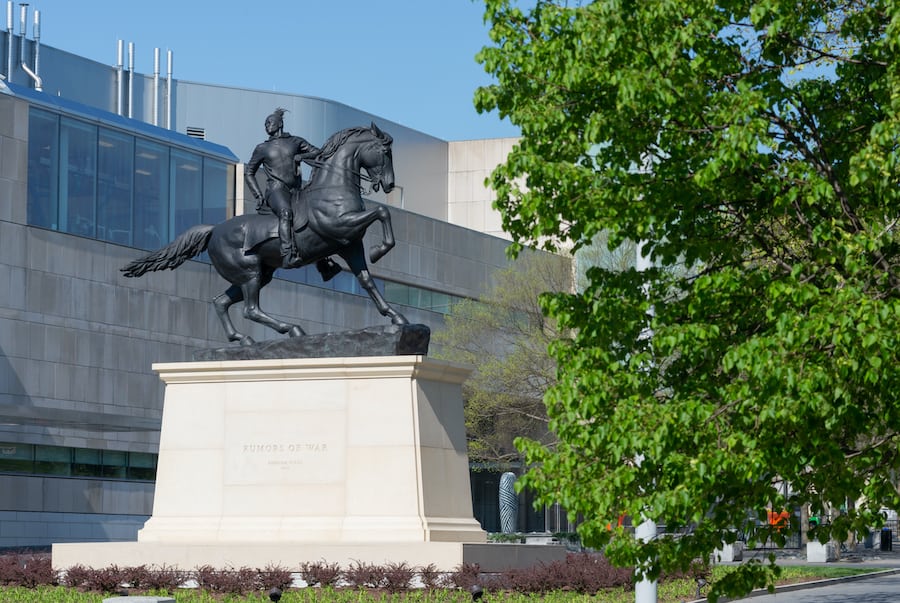
He returned to George Washington University to study for a master’s degree in museum studies, graduating in 1982:
“At the time, no one did museum studies degrees. Now, of course, you have a hard time finding a university that doesn’t offer a degree or certificate programme in museum studies.
“I worked full-time while I was going to graduate school and I had a couple of jobs. I worked at the Octagon Museum in Washington, DC, which is part of the American Institute of Architects. When I graduated, by good fortune, I landed a job at a tiny museum in east-central Florida, about midway between Orlando and Daytona beach.
“They were looking for a director. Here I was, a 25-year-old, recently minted graduate, with relatively limited experience. They liked me, and I loved the opportunity. That was the first week of January 1982. I haven’t slowed down since then.”
The Virginia Museum of Fine Arts evolves
The Virginia Museum of Fine Arts is one of the 10 largest comprehensive art museums in America.
“We are an agency of the State of Virginia,” Nyerges explains. “We were founded in 1934 by the general assembly, then signed into existence by the Governor. The Virginia Museum of Fine Arts is the oldest, the largest, and – we like to think – the best state art museum in the United States.”
“There are obviously several very good ones, but we have evolved as an institution over the last 85 years.”
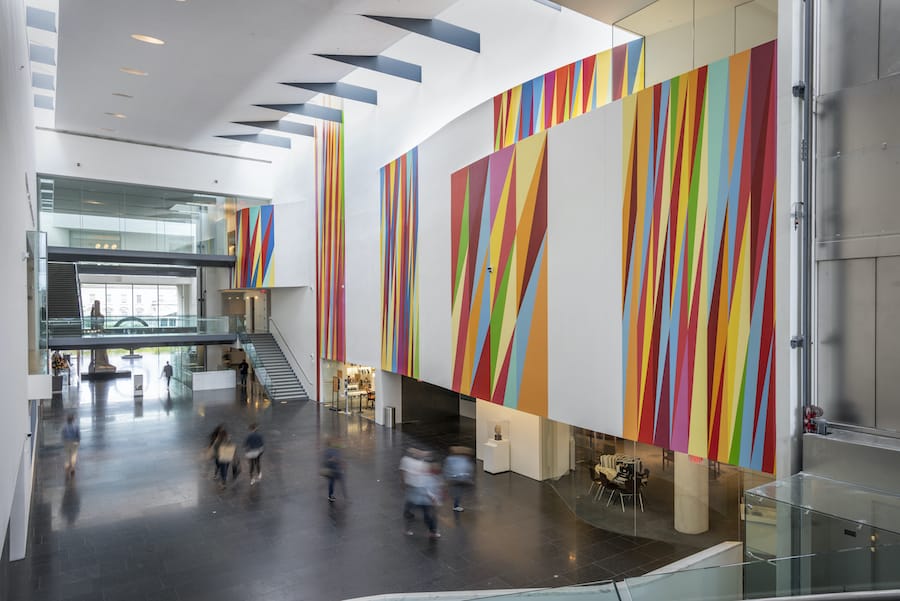
“We opened in 1936, and have grown from a very tiny museum with 50 works of art and a staff of 20 to an institution that today has about 650,000 square feet by 65,000 square meters, and about 700 employees, both full-time and part-time. That is the equivalent of having about 470 full-time employees.
“We not only serve around 600,000 visitors a year to our museum in Richmond, but we also provide services across the Commonwealth of Virginia every day. We have exhibitions with teacher workshops and a host of programmes, and we also have a mobile art museum called the Artmobile. This goes into communities all over Virginia. The museum serves many rural areas literally on a daily basis. We serve 6 or 700,000 people a year, somewhere other than Richmond.”
Connecting visitors with art
All good art museums, he says, are about providing a connection between visitors, art and the history of creativity across human time:
“And now, of course, we’re talking about real visitors and virtual visitors, in the pandemic world. Our collections, for example, span the last 6,000 years of humankind’s history; they span every part of the globe. As a result, we’re able to provide people anything from a glimpse to an in-depth look at cultures, both old and very contemporary, all across the globe.”

“We provide people with inspiration, we provide people with solace. We provide people with the beauty that adds something so important to our lives.”
Culture for all at the Virginia Museum of Fine Arts
However, some people are intimidated by the idea of an art museum and may feel it isn’t for them. Speaking about how the Virginia Museum of Fine Arts reaches such audiences, Nyerges outlines its strategy:
“We’re the only art museum in America that offers free general admission, and we’re open 365 days a year.”

“This is one way we break down barriers. I understand the barriers. I grew up in a poor neighbourhood. None of my friends and neighbours went to the art museum. It was my mother, who was Italian, and my father, who was Hungarian, who understood the value of culture and how it provided an extra element of inspiration in life.
“When I was a kid, my mother would take us on the bus downtown. We had to then transfer buses to come down to the museums, the Rochester Museum of Arts and Sciences, the Memorial Art Gallery, the George Eastman Museum, which is the international museum of photography, the home of Kodak.
“I grew up going to museums on Sunday afternoons. My father was an amateur photographer, and museums were part of our existence.”
Making the museum accessible
Most people, he says, don’t make art part of their lives:
“And they should. We offer free admission because it breaks down the barrier, whether it’s real or perceived, as a way to entice people to come into the museum. We also have the best hours of any art museum in the country. The museum is open seven days a week, 365 days a year. We open Wednesday, Thursday, and Friday nights till nine, and we offer great amenities.”

“We have one of the best gift shops in America, in an art museum. Plus we have a cafe which is casual and easy dining with wonderful food. Also, we have one of the best restaurants in Richmond, Virginia, which is a real foodie town.
“We have different ways to entice people through the door. But it is being free that breaks down barriers. The opening hours give people the impression that we never close. This is invaluable if you want to be accessible and ecumenical for everybody because people come from all educational and economic backgrounds.”
See Yourself Here
In Virginia, particularly, there is another consideration in terms of inclusivity and accessibility:
“We have a much tougher, taller mountain to climb. Because when we opened in 1936, and for the better part of three decades following that, the Virginia Museum, like all institutions in Virginia was a segregated institution. Black citizens were regarded as second class, at best, including in the art museum. As a result, we do everything we possibly can; our new marketing motto is ‘See Yourself Here.’”
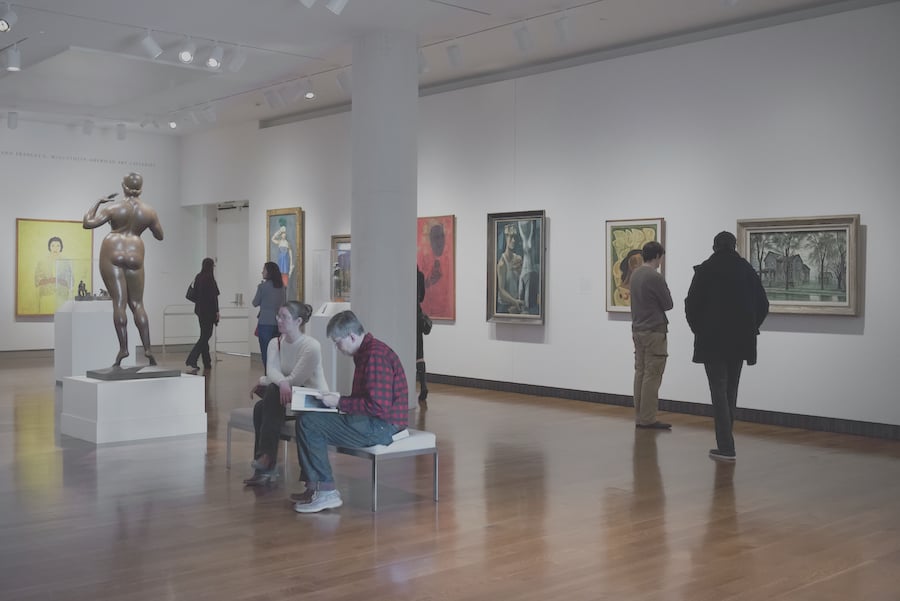
“Previously, when we opened the McGlothlin Wing in 2010, we came up with the catchphrase ‘It’s Your Art!’ The notion was that all 8.5 million Virginians own the Virginia Museum of Fine Arts. Not because we’re a state institution, but because we’re a museum that is for everyone. We define our audience with that word, everyone.
The VMFA has worked very hard to attract people:
“Many are reluctant. Their initial reaction is ‘That’s not for me’, or ‘I don’t have the money’, or ‘ I don’t have the education’. We break down those barriers so that everybody feels at home at our institution.”
The McGlothlin expansion
The McGlothlin Wing, named after its principal donors, native Virginians James W. and Frances G. McGlothlin, opened in 2010 and is the museum’s largest expansion.
“It was transformational,” Nyerges says. “This expansion provided us more space for the permanent collection, a space for conservation, a space for special exhibitions. It provided the space for our restaurant, our café, and our entertainment space; we do a lot of private events, corporate dinners, lunches and lots of weddings.”
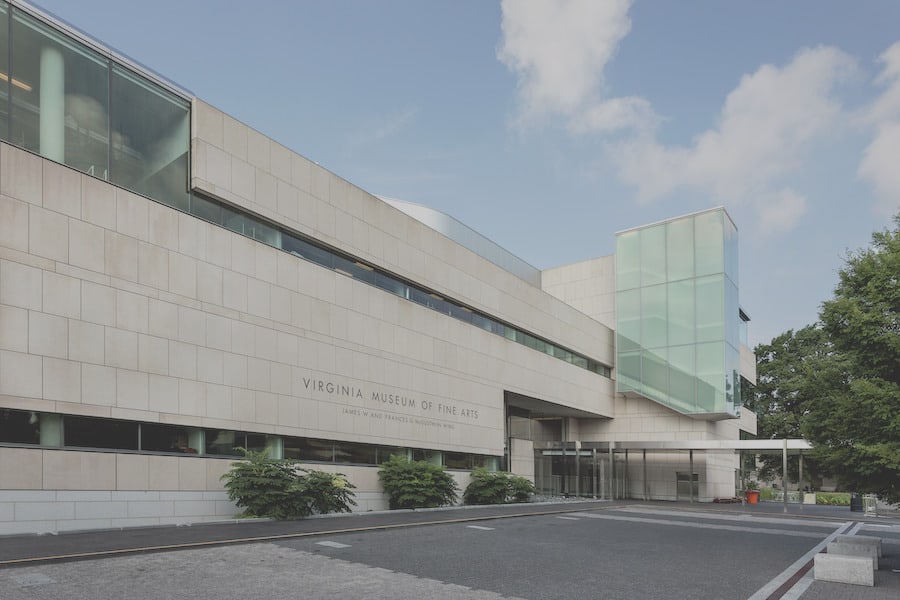
“Of course, during the pandemic, it’s been less than that, because we haven’t had any social events. Those have only started happening again in the last two months as vaccinations have increased dramatically, and as people getting sick has waned. Virginia, though, has been more fortunate than many other places throughout this pandemic.”
VMFA provides as many different opportunities and entry points for visitors as possible.
“Sometimes people’s first visit to the museum is a wedding; sometimes it’s a special exhibition – we have major special exhibitions. The McLaughlin wing provided us with that. It’s about 16, 17,000 square meters. It is four stories of public space. And we have an additional floor on top of that, so we have space for massive special exhibitions. We have a continual diet of special exhibitions, many of which we curate.”
Current exhibitions at the Virginia Museum of Fine Arts
“The special exhibition currently on view, getting rave reviews from the major art media, is called The Dirty South,” says Nyerges. “This is curated by our Head of Modern and Contemporary Art.”
The Dirty South: Contemporary Art, Material Culture, and the Sonic Impulse, curated by VMFA’s Valerie Cassel Oliver, is a groundbreaking exhibition revealing aesthetic traditions of the African American South and their influences on art, music, and other forms of cultural expression over the last 100 years.
Contemporary art and art created by those not academically trained converge with music in a relevant and culturally rich study that includes paintings, sculpture, assemblage, and collage, as well as the personal possessions of music icons.
“We have another exhibition right now called Virginia Arcadia, running to the beginning of August, curated by one of our American curators,” adds Nyerges.
Virginia Arcadia: The Natural Bridge in American Art is a free exhibition exploring the artistic legacy of an iconic natural wonder, the Natural Bridge, the Shenandoah Valley’s breathtaking centrepiece, through paintings, prints, decorative arts, photography and more. Featured artists include Frederic Church, David Johnson, Edward Hicks, and many others.
“It is going on to a couple of spots across Virginia when it closes here. Meanwhile, The Dirty South exhibition will go on to the contemporary art museums in Houston, Denver, and Bentonville, Arkansas.”
Virtual outreach
The museum closed for three and a half months at the height of the pandemic:
“It’s hard to look at a pandemic that costs the lives of 600,000 people in our country and millions of people across the world and find a silver lining,” he says. “But the fact is we went virtual. We’ve had virtual programs for years; in fact, with our statewide school programme, we had a virtual programme giving live streaming tours between the museum, Richmond and every other corner of the state.”

“During the pandemic, we moved programmes online. We had lectures, wine tastings, even our free live jazz programme, which we do Wednesday or Thursday evenings, went virtual. It has been an unbelievable boon to participation and interest.
“One interesting fact is that 50% of the people that have participated over the last 16 months with online programming are first-time visitors. We have expanded our audience, literally doubling what we would have expected.”
New expansion plans
VMFA is currently planning a new expansion, which will open in 2025.
“It has three components,” Nyerges says. “One is a renovation component. We are going to renovate the 1936 original building as well as the 1970 building. Our goal is to provide more exhibition space, more accessibility for our visitors, and better flow in that part of our facility. We are eliminating several dead ends in terms of circulation. We are also providing more space for the Raysor Centre for Works on Paper.”
The Frank Raysor Center for the Study of Works on Paper will feature a study room for scholars, curators, professors, and students from local colleges and universities.
“We’re also going to be renovating the Cheek Theatre. This will make the stage more accessible to productions such as ballet productions. We are working with Richmond Ballet to be able to host more programming in that facility.
“The second component is a freestanding building, which is going to be a collection centre of about 40,000 square feet or 4,000 square meters of space. This will triple the amount of space we have for conservation and more collection storage.
“We are also going to add 300 parking spaces and a new parking deck. This will add about 50% more parking spaces.”
Photography at the Virginia Museum of Fine Arts

Currently, the parking deck that opened in 2008, prior to the new wing opening, has about 600 spaces.
“The third component is the new wing. It will be about 11,000 square meters, over five floors. We’ll have one floor for special exhibitions, matching what we already have. So, we will be able to double the amount of major special exhibitions that we’re able to present. We are also going to have greatly expanded space for African art. This will be moving from the 1970 building to its own entire floor.
“The 21st-century galleries will be moved from the McGlothlin Wing to this new wing, tripling the amount of space for 21st-century art.
“We will also be providing the first dedicated, expansive space for photography.”
Photography is the fastest growing area of VMFA’s collection:
“About two years ago, we took on the Aaron Siskind Foundation collection. He was one of the great abstract expressionist photographers of all time; the collection consists of more than 8,000 photographs. We have added thousands more photographs and we’ve also added a new curatorial post, Curator of Photography, to our ranks. We have hired one of the best curators of photography in America, Dr Sarah Kennel, who will begin at the end of next month.”
Looking to the future
Two floors will provide space for the woodworking and carpentry shops and additional storage for crates and cases:
“The other piece of the expansion is going to be on the garden level,” Nyerges says. “It will be on the ground level, facing the Robins Sculpture Garden. This will be an entertainment space that will give us the ability to hold events such as lunches, dinners, wedding receptions and so on for 500 to 600 people seated, with all the proper acoustics and technology to support those kinds of events.”
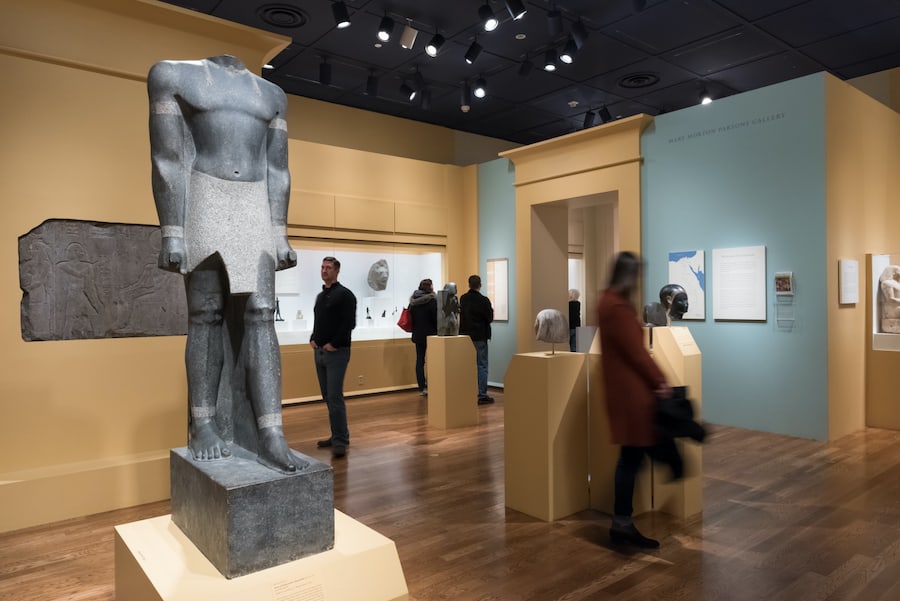
“That in itself is going to expand our audience. But we’ll also have that space spill out into the garden. We will be able to do much of our own programming in that space, expanding the amount of programming that we can present.
“We’re excited. Expansion is, of course, just a means to an end. That end is concerned with how we expand our audience, how we bring more people, including new audiences, into the museum, how we bring people back, and how we grow the impact of the museum on the people in central Virginia, and Virginia as a whole.”
Top image: Visitors enjoy exhibitions during the 2020 holiday season at VMFA. Courtesy Virginia Museum of Fine Arts, Photo by Sandra Sellars, © 2020 Virginia Museum of Fine Arts

